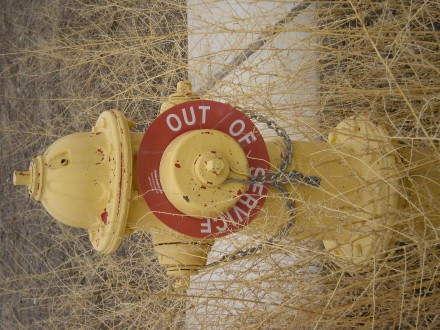 What do you do when the city where you live is dying? All over the United States formerly great cities are crumbling, but some are definitely in worse shape than others. One reader recently wrote to me about what she sees happening all around her in Reno, Nevada. The unemployment rate in Reno is now up to 11.7 percent, which is well above the national average of 8.3 percent. But that doesn’t tell the whole story. The recent recession hit Nevada particularly hard and people have been moving out of the state in waves. In fact, the labor force in Nevada has shrunk by close to 20 percent over the past year as workers have moved elsewhere in search of work. But even though the labor force is now nearly 20 percent smaller, the unemployment rate is still well above 11 percent. There simply are not enough jobs in large Nevada cities such as Reno and Las Vegas. Unfortunately for Reno, it does not have the same kind of big corporate money pouring into it that Las Vegas does. The good news is that you can buy a house very, very cheaply in Reno because homes were foreclosed on in droves during the housing crash. Even today, some housing developments that were put up near the end of the boom times look like virtual ghost towns. The main industry in Reno is “entertainment”, but many of Reno’s strip clubs and gambling establishments have aged so badly at this point that they just look kind of depressing. I guess that is kind of fitting, because Nevada has the fifth highest suicide rate in the nation, and Reno has been ranked as one of the top 10 depressed cities in the entire country. As the city has declined, gangs have moved in and the drug trade is flourishing. Reno has been called the meth capital of America, and crime is on the rise. Despite being surrounded by tremendous natural beauty, Reno has become a very unpleasant place in which to live. But what is happening in Reno is also happening in hundreds of other communities across the United States. Our economy is collapsing and our cities are crumbling right in front of our eyes, and it is only going to get worse from here.
What do you do when the city where you live is dying? All over the United States formerly great cities are crumbling, but some are definitely in worse shape than others. One reader recently wrote to me about what she sees happening all around her in Reno, Nevada. The unemployment rate in Reno is now up to 11.7 percent, which is well above the national average of 8.3 percent. But that doesn’t tell the whole story. The recent recession hit Nevada particularly hard and people have been moving out of the state in waves. In fact, the labor force in Nevada has shrunk by close to 20 percent over the past year as workers have moved elsewhere in search of work. But even though the labor force is now nearly 20 percent smaller, the unemployment rate is still well above 11 percent. There simply are not enough jobs in large Nevada cities such as Reno and Las Vegas. Unfortunately for Reno, it does not have the same kind of big corporate money pouring into it that Las Vegas does. The good news is that you can buy a house very, very cheaply in Reno because homes were foreclosed on in droves during the housing crash. Even today, some housing developments that were put up near the end of the boom times look like virtual ghost towns. The main industry in Reno is “entertainment”, but many of Reno’s strip clubs and gambling establishments have aged so badly at this point that they just look kind of depressing. I guess that is kind of fitting, because Nevada has the fifth highest suicide rate in the nation, and Reno has been ranked as one of the top 10 depressed cities in the entire country. As the city has declined, gangs have moved in and the drug trade is flourishing. Reno has been called the meth capital of America, and crime is on the rise. Despite being surrounded by tremendous natural beauty, Reno has become a very unpleasant place in which to live. But what is happening in Reno is also happening in hundreds of other communities across the United States. Our economy is collapsing and our cities are crumbling right in front of our eyes, and it is only going to get worse from here.
A reader of my site named Heather who has been unemployed since November of last year recently shared the following with me….
I am living in Reno/Sparks Nevada and I feel like it is ground zero for collapse. There are a lot of people who are in denial right now and cannot see the larger picture. I keep also saying we are the canary in the coal mine for the rest of the country. It is quite depressing driving around seeing empty office buildings with vacancies and retail areas just empty. Went to the stores and retail seems pretty slow also. I am volunteering at ProNet locally and it helps unemployed people finds jobs and skills. It has been depressing there too with very little jobs out there for many people who need one.
She said that I should share what is happening in Reno with my readers. She wanted people to know what those living in Reno are going through.
You might think that since Reno is so sunny, so warm and surrounded by such natural beauty that it would be one of the happiest places in America.
Unfortunately it turns out that the opposite is true.
Reno is actually a very sad place.
In fact, last year Men’s Health ranked Reno as the ninth saddest city in the United States.
In response to this ranking, one resident of Reno wrote the following….
In light of this disheartening list-making, it is, of course, important for Nevadans to look on the bright side. Rather than allowing these statistics to depress us further, we can consider them a series of challenges that make living in places like Reno and Las Vegas all the more impressive. You don’t just live in Reno. You survive Reno! To dwell in Reno, you must triumph over the odds that are stacked against you—one of the things we’re supposed to do best here.
If we can withstand all of the emotional curveballs thrown at us because we have selected such a turbulent location in which to reside, we can probably survive anything.
As a lifelong Renoite, I am inclined to respond to these lists with defiance. Yeah, things can look pretty grim sometimes when no one can find a job, and there seems to be no way out.
And that is how many Americans are feeling these days. They are broke, unemployed, depressed and out of options.
How can you pick up and start a new life somewhere else when you have no job and no money?
Sadly, a lot of younger Americans are turning to drugs in an attempt to escape the pain of their daily lives.
One article that I found attempted to find humor in the raging meth epidemic that is happening in Reno….
Reno has been affectionately called the meth capital of the nation. Some foolishly think mass drug usage can ravage a city as swiftly as it can ruin a user’s clear complexion. In all reality, drug addiction is no more than an endearing quirk, certainly not a cause for concern. Babies and adolescents with addiction-addled parents should stop being coddled and learn how to take care of themselves. I’ve been doing my own laundry since I was six months old — I’m sure they can do the same. If there is anything disturbing about the meth problem in Reno, it’s that it shows the lack of variety in this town. Why don’t you try some uppers like MDMA? Your teeth will thank me.
Unfortunately, Reno is far from alone. In the past I have written about how formerly great cities such as Detroit, Cleveland and Baltimore are completely falling apart as well. This kind of thing is literally happening from coast to coast.
There is a very serious lack of decent jobs in America right now. At this point only 24.6 percent of all jobs in the United States are good jobs.
This has made it increasingly difficult for Americans to be able to take care of themselves.
If you can believe it, more than 100 million Americans are on welfare at this point.
And that number does not even include the tens of millions of people that are on Social Security and Medicare.
What in the world has happened to us?
These days most Americans work really hard all of their lives but never end up reaching their dreams.
In fact, one recent study found that 46 percent of all Americans die with less than $10,000 worth of financial assets.
Talk about depressing.
But instead of having us focus on how bad the economic numbers are, the Federal Reserve wants to start measuring how “happy” everyone is. The following is from a recent ABC News article….
Ben Bernanke wants to know if you are happy.
The Federal Reserve chairman said Monday that gauging happiness can be as important for measuring economic progress as determining whether inflation is low or unemployment high. Economics isn’t just about money and material benefits, Bernanke said. It is also about understanding and promoting “the enhancement of well-being.”
So what would you say if the Federal Reserve contacted you and asked if you are happy?
Please feel free to post a comment with your thoughts below….

